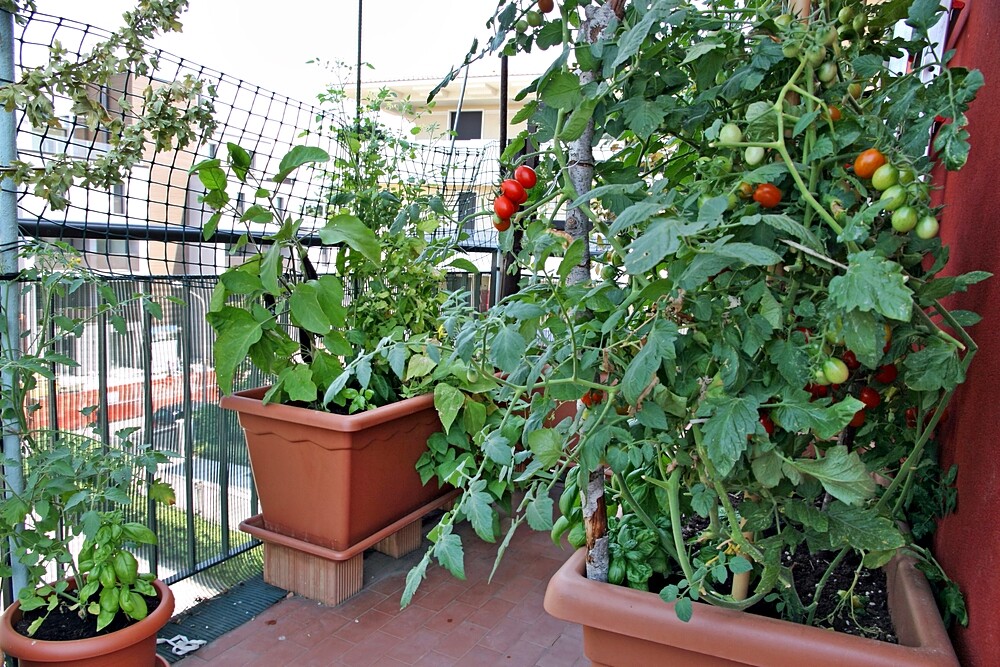Without pesticides and eating regionally – no problem with “Urban Gardening”! We show the most suitable vegetable varieties for growing at home.
To really make sure that your vegetables are 100 percent pesticide free and regional, it is best to grow them yourself. At home. “Urban gardening is the new trend. We will show you vegetables that are suitable for growing at home or on the balcony.
1. Herbs
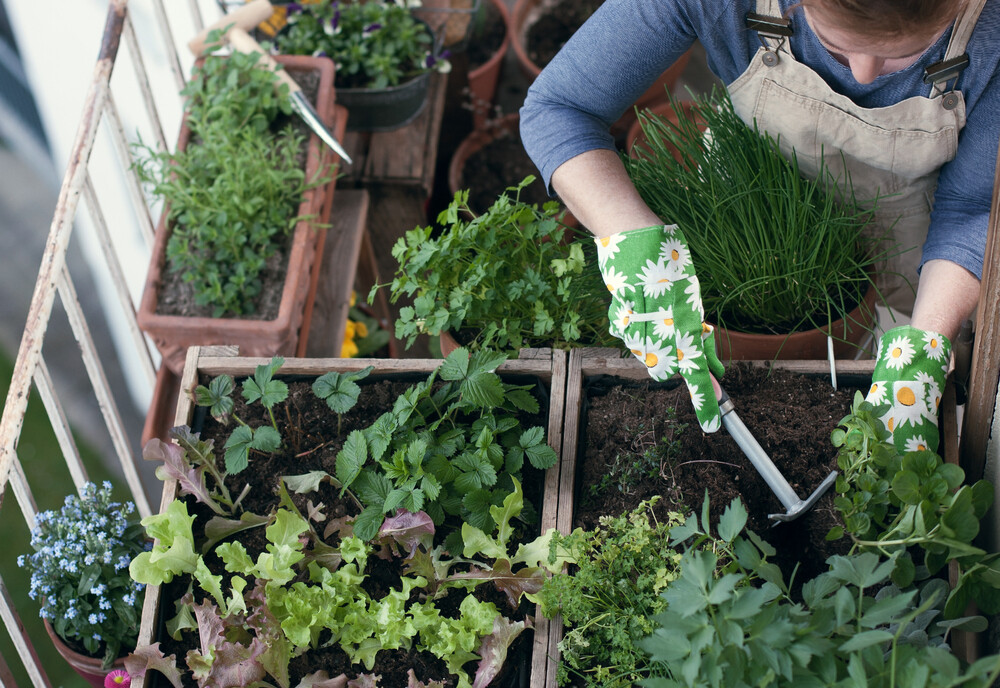
Basil & etc. need above all a sufficiently large pot with several drainage holes. Terracotta pots are ideal for this. The soil should be loose and well-drained. Always let it dry out slightly after regular watering before you water again. Fertilize once a week with liquid fertilizer and every now and then a radical cut down to a few leaves allows the herbs to grow better.
Besides, sufficient sunlight is essential for your own herb cultivation. Therefore, place them in a sunny place, protected from the wind. That way you will have something of them for a long time.
2. Spring onions
The next time you buy spring or spring onions, simply cut off the leek and keep the bulb. Place the bulb with the roots facing down in a glass vase or a water glass on the windowsill. The bulb should always be covered with water.
As soon as the green shoots are ten to fifteen centimetres long, you can cut the fresh green or use the entire onion. You can harvest a total of two to three times from one onion. Don’t forget that: Don’t forget to change the water regularly or the onions will rot.
3. Radish
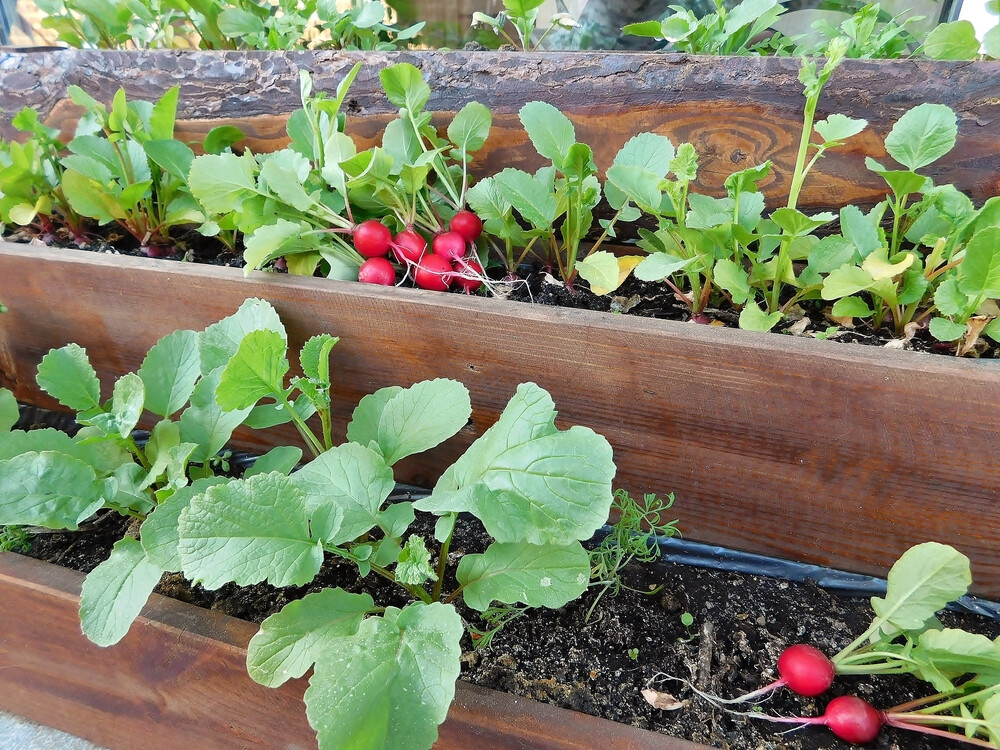
Radishes are short and grow fast. Therefore they do not need a deep pot, rather a wide pot. A balcony box is ideal here. The short ripening period allows you to harvest the first time only four to six weeks after sowing. If you sow every four weeks, you can always eat your own fresh radishes from May to October.
Important for successful breeding is on the one hand a sunny, half-shady place on the windowsill or balcony. On the other hand, the seeds should not lie too close together in the fine soil. With a certain distance the tubers do not hinder each other during growth and can develop better. Two seed rows in one box are ideal.
4. Seedlings
Seedlings are currently the stars of the food scene. From cress to lettuce – seedlings can be anything that has put on its first fresh leaves and has not yet grown into a full plant. It is best to sow the seeds in a flat dish and place them on the windowsill or balcony in the light. The soil should always be moist but never soaked. As soon as the first shoots are visible, you can harvest.
5. Mushrooms
For the domestic cultivation of mushrooms, high humidity, high CO2 concentration and uniform temperatures are particularly important.
You can create these conditions with a propagator or even in the cellar. Under ideal conditions mushrooms are reliably productive, even in winter. Special lighting conditions are not important for mushroom harvesting.
6. Salad
Uncomplicated picking salads such as the Lollo Rosso or oak leaf salad are also suitable for windowsill or balcony gardeners who are still somewhat inexperienced. Salads are light buckets and should therefore be placed in a bright place.
When sowing, press the seeds only a little bit to the soil and keep them well moist. Again, do not sow the seeds too close together in the pot or balcony box, so that the salad plants can develop to their full size.
7. Aubergines
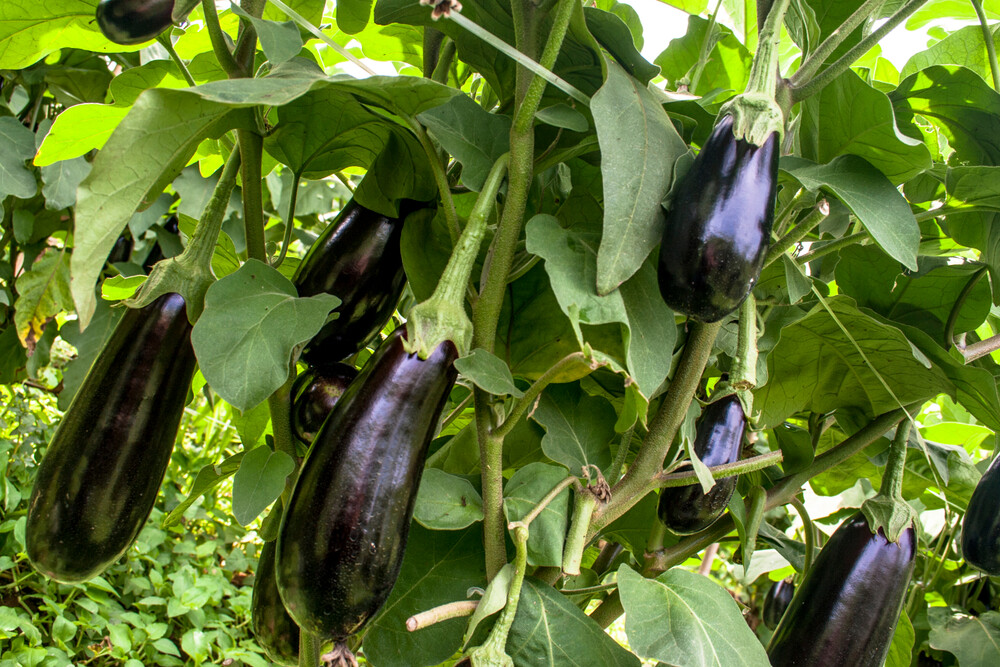
If you want to harvest your own miniature aubergines, you must start sowing in the propagator on the windowsill as early as the end of February. To do this, place the seeds at a certain distance in a pot or seed tray and cover them lightly with soil. Then you water the soil and keep it constantly moist. The seeds are best risen at a constant temperature of 20 to 25 degrees Celsius (even at night). After about 14 days the seedlings can be transplanted into a larger container.
At the end of April, beginning of May, the plants are strong enough to be placed in a large container (at least 15 to 20 litres) on the balcony in a bright, warm place protected from the wind. They can be harvested in summer.
8. Tomatoes
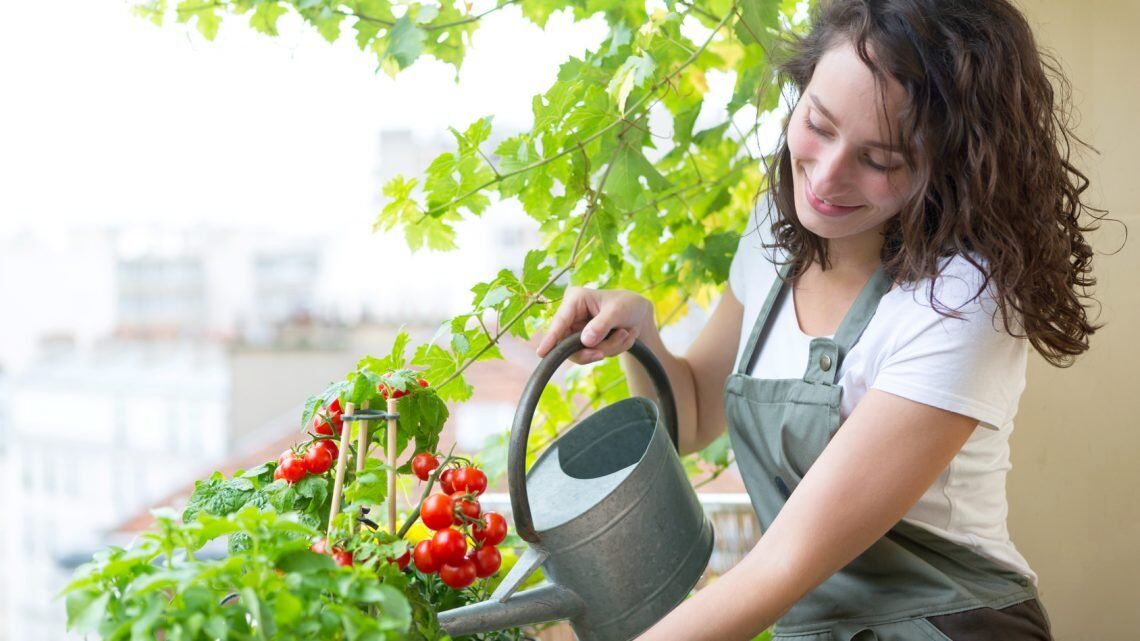
Tomatoes belong to the classic “urban gardening” vegetable varieties. Whether stick, shrub, cherry, egg or beef tomatoes – they grow as well on the windowsill as on the balcony. You can either grow the plants yourself from seeds. Or you can buy young plants in spring at the nursery or DIY store.
If you prefer, you should sow the seeds in the propagator in March or April. Young plants should be planted in ten to 20 litre pots with nutrient-rich soil. Window boxes are not suitable for cultivation. Because tomato plants are sensitive to frost, it is better to avoid sharp drops in temperature.
Tomatoes need a lot of direct sunlight. A bright, weather-protected place on the house wall is ideal. It is also important for the cultivation of tomato plants to have a climbing aid (e.g. a wooden stick that is stuck into the ground). The stalk is tied to it. In this way the tomato plant can grow upwards and does not break off due to the heavy fruits. Watering is best in the morning and evening. With ideal care, the first fruits can be harvested from June onwards. Tomato plants are annual and die after the first frost.
9. Sugar peas
Sugar peas are best suited for balcony cultivation. Because they grow vertically, they do not require a lot of floor space. For this they need, like the tomato plants, a climbing aid to climb up. Wicker, ribbons or rabbit wire are best suited for this.
From the beginning of April you can sow the seeds in the balcony box with a little distance between them. A sunny to semi-shady place is ideal as a location. Attention: Sugar peas should not stand together with tomatoes. But they go well with radishes and salad.
10. Chili and pepperoni
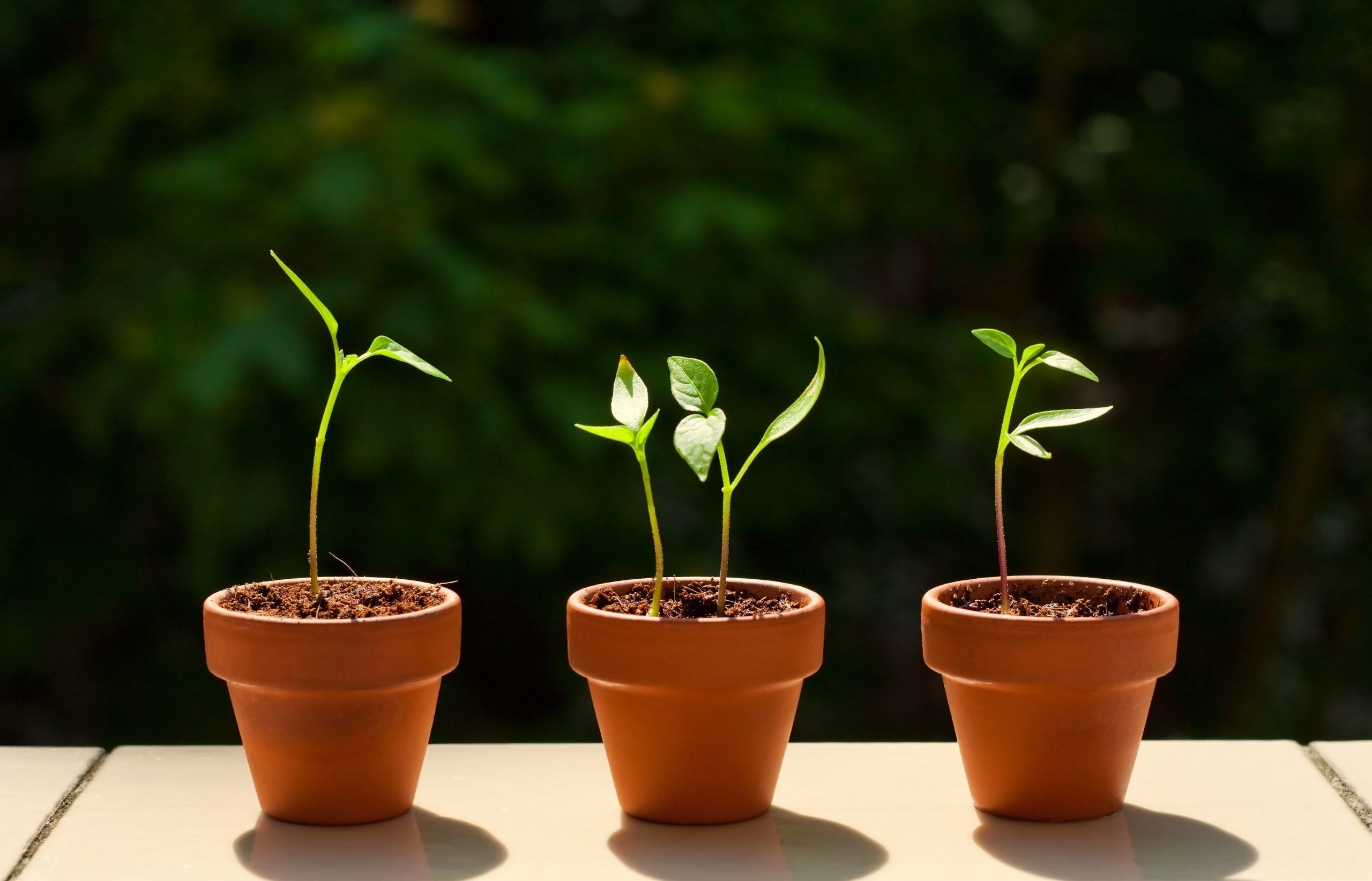
Chili and pepperoni belong to the pepper plants. They cannot tolerate frost. Therefore you should prefer them in your apartment at room temperature and with enough light. As soon as the temperature does not drop below five degrees Celsius and the plants have reached a height of about ten centimetres, you can repot them in a flower box and place them on the balcony.
The chili or pepperoni plants should also be supported by a wooden stick and tied up to it. A nutritious soil and regular fertilization with phosphate fertilizer is important for a good harvest.
Note: The earlier the harvest, the milder the chillies. When they are deep red in colour, they are ripe and have reached their full pungency.
11. Spinach
Already in March you can sow the relatively large spinach seeds in the flower box. Make sure that there is a certain distance between the seeds so that the leaves can develop their full size. Water and fertilise the soil regularly with normal plant fertiliser. After about six weeks you can harvest fresh spinach from your balcony for the first time!
12. Zucchini
Lots of space, plenty of light, plenty of moisture and many nutrients – these are ideal conditions for the zucchini. In order for the zucchini plant to develop properly on the balcony, a tub of at least 15 to 20 litres filled with nutrient-rich soil is recommended. Ripe compost is ideal. Or a mixture of soil and horn shavings. The courgette also needs plenty of light (even the midday sun won’t harm it) and should always be well watered.
If you want to prefer your zucchini plant, you should start in April. However, you can also buy young plants at the nursery or DIY store. After the ice saints’ day, the plants can be put in the tub provided and grown on the balcony.

